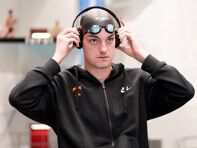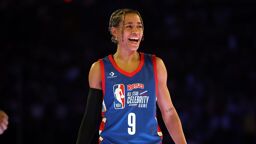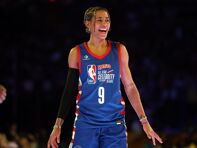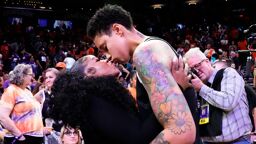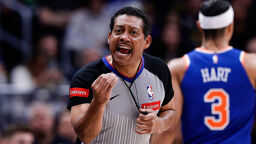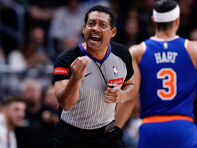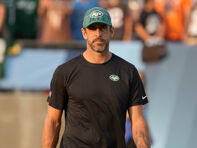The blimp shot reveals just how incredible that winning charge was, by a horse that few commentators (including myself) had given any attention before the race. Mine That Bird, a Canadian-bred bay gelding that sold for $9500 as a yearling and went off as a 50-to-1 long shot, came from dead last to flatten a field of 18 that were all struggling in the final furlongs on a sloppy track.
The blimp shot reveals just how incredible that winning charge was, by a horse that few commentators (including myself) had given any attention before the race. Mine That Bird, a Canadian-bred bay gelding that sold for $9500 as a yearling and went off as a 50-to-1 long shot, came from dead last to flatten a field of 18 that were all struggling in the final furlongs on a sloppy track.
As the field churned towards the final turn, the blimp shot showed jockey Calvin Borel doing his world-famous thing of hugging the rail to save ground. He threaded his horse skillfully through any openings he found, swinging to the outside once because there was no room to pass on the left, then back to the rail again. Midway down the home stretch, he saw an opening of perhaps three feet between the rail and the leading horse, Pioneerof the Nile. Mine That Bird shot through that keyhole, and left Pioneer behind amid splashes of mud. By the time he hit the wire, he was nearly 7 lengths in front.
"What was the name of that horse again?" one commentator quipped. Afterwards New Mexico trainer Chip Woolley mentioned casually that he had trained Mine That Bird at high altitude — a legitimate training trick that is familiar to human athletes. That explains, in part, why the horse had such astonishing oomph over the last quarter mile, with a lot more oxygen-carrying red-blood corpuscles than his rivals.
It was definitely an upset for the history books. And a feel-good day for the sport — no breakdowns, and new rules in place that ban steroids and otherwise make some progress towards horse safety.




